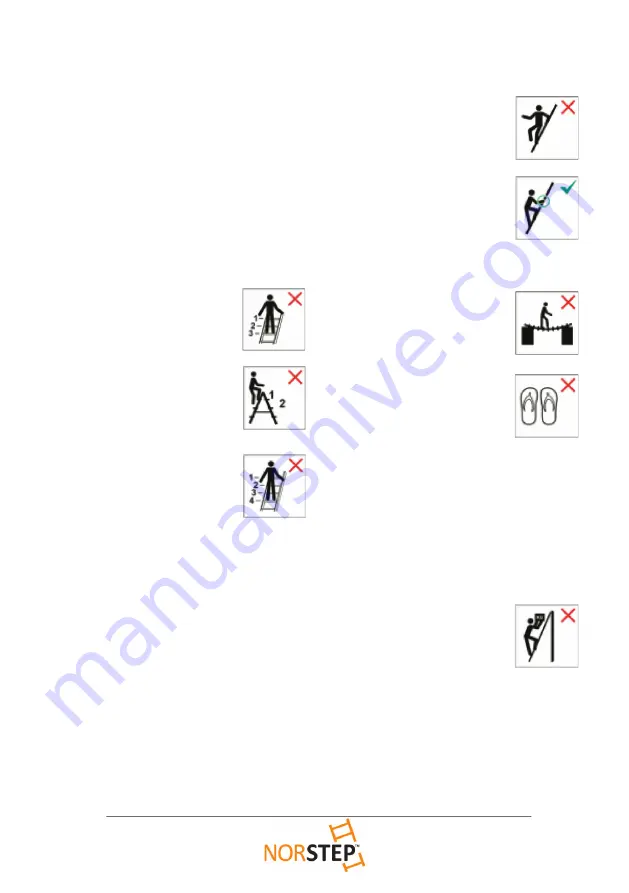
42
3. Using the ladder
Do not exceed the maximum permissible
load for the type of ladder;
Do not overreach; users should keep their
belt buckle (navel) inside the stiles and both
feet on the same step/rung throughout the
task;
Do not step off a leaning ladder at a higher
level without additional security, such as
tying off or use of a suitable stability device;
Do not use standing ladders for access to
another level;
Do not stand on the top three
rungs of a leaning ladder;
Do not stand on the top two
steps/rungs of a standing ladder
without a platform and hand/
knee rail.
Do not stand on the top four
steps/rungs of a standing ladder
with an extending ladder at the
top.
Ladders should only be used for light work of
short duration;
Use non-conductive ladders for unavoidable
live electrical work;
Do not use the ladder outside in adverse
weather conditions, such as strong wind;
Take precautions against children playing on
the ladder;
Secure doors (not fi re exits) and windows
where possible in the work area;
Do not ascend or descend unless
you are facing the ladder;
Keep a secure grip on the ladder
when ascending and descending;
maintain a handhold whilst
working from a ladder or take
additional safety precautions if
you cannot.
Do not use the ladder as a bridge;
Do not wear unsuitable footwear
when climbing a ladder;
Avoid excessive side loadings e.g. drilling
brick and concrete;
Do not spend long periods on a ladder
without regular breaks (tiredness is a risk);
Leaning ladders used for access to a higher
level should be extended at least 1 m above
the landing point and secured, if necessary;
Do not carry equipment which is
heavy or diffi cult to handle while
using a ladder.
Summary of Contents for 57631
Page 37: ...37 FI ...

































